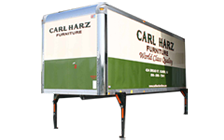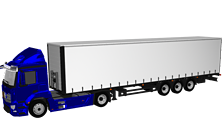What is a Cargo Transport Unit (CTU)?
For more information click on the buttons.


Close
Container (ISO 668)
- It must be designed to bear lengthy and repeated transport by land and sea.
- Its construction must be such that it can be transported without unpacking being required.
- It must be able to bear the stress of turnover and transport.
- It must be designed so that it is easy to load and unload.
- At least 1 m³ of space is required.
- It can be executed in lengths of 10, 20, 30, 40 or 45 feet.

Close
Swap body
A swap body is a body which can be separated from the carrier vehicle (truck).
- A swap body is a durable piece of transport equipment for use in regional transport, which is suitable for road and rail transport in Europe and complies with the European standards.
- Swap bodies are generally 2.5 m or 2.55 m wide and available in three length categories:
- Class A: Length of 12.2 m to 13.6 m (maximum gross mass 34 tonnes)
- Class B: 30 feet (length of 9.125 m);
- Class C: length of 7.15 m, 7.45 m or 7.82 m (maximum gross mass 16 tonnes)
- Class A: Length of 12.2 m to 13.6 m (maximum gross mass 34 tonnes)
- For use on combined transport, additional equipment must be provided to enable handling using rail wagons (UIC approval 592-4).

Close
Trucks
A truck within the meaning if the CTU/CoP is a vehicle with an appropriately placed transport container which can also be couples to a train and be transported on a ship via so-called "unaccompanied transport". Transport is also "unaccompanied" in the case of a train with a driver.
- For combined transport, the vehicle or the trailer must possess a UIC authorisation.
